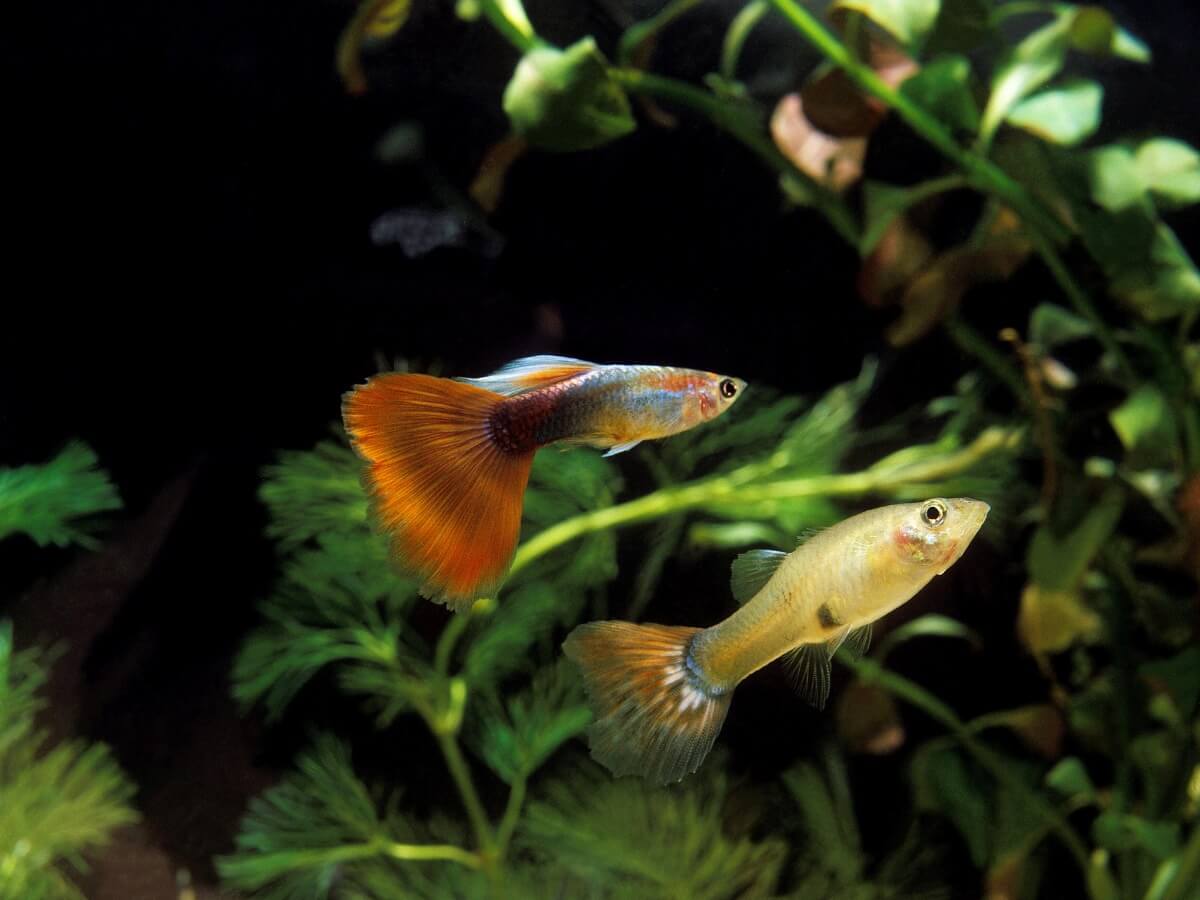Cloudy Water in the Aquarium: Causes and Solutions

If you have a freshwater tank at home, you’ll know that you have to pay almost constant attention to it so that it remains clear and natural-looking. It’s necessary to clean the algae, trim the shoots of live vegetables, filter the water, and vacuum the substrate from time to time. With all these actions, you can prevent cloudy water in the aquarium and many other unpleasant occurrences.
However, first-time owners may forget to cycle the aquarium correctly and wake up the next day to a very unpleasant surprise. Turbidity in tank water can set in quickly and cause concern, but don’t worry – here’s how to handle it before it becomes a problem.
How do I know if the water in my aquarium is cloudy?
“Turbidity” is the range of transparency that water loses due to the presence of suspended particles. In other words, the greater the amount of solid material “floating” in the tank water, the greater the degree of turbidity.
The nephelometric turbidity unit (NTU) is the best measurement to establish this parameter, as it’s standardized globally. According to the World Health Organization (WHO), water with an NTU greater than 5 should never be consumed, and, ideally, all liquid should have values of less than 1 NTU.
As at home we don’t have instruments to quantify turbidimetry and nephelometry, it’s enough for us to know that the aquarium water is cloudy when the bottom and rear elements are blurred. In general, this turbidity is “transparent” and lacks any specific coloration, although in some cases certain shades can be observed due to the particles suspended in the water.
Turbidity is always due to the presence of suspended particles in the water column.

Causes of cloudy water in the aquarium
If you notice that your fish are suddenly more difficult to see, you’ll wonder how this has happened. Turbidity in water can be caused by the following triggers, among many others:
- The presence of phytoplankton (autotrophic microscopic aquatic organisms) or algae in suspension in the water column.
- The presence of suspended sediments from erosion. A rock or tank decoration may be breaking apart due to the action of the water, and this releases particles that are suspended in the tank.
- Elevation of elements from the bottom of the tank. Some fish constantly stir the substrate and “lift” the dirt to a higher part of the water column.
These are the general causes of the immediate turbidity of an aquarium, but to be able to define the cause more exactly, we need to look at the color of the water. For this reason, we split the different types of turbidity according to the “color” of the turbidity.
“White” turbidity
As we’ve already said, “white” turbidity is colorless, but we’ll notice that it’s difficult to see the bottom of the tank and the fish. Some of the main reasons for this are as follows:
- Substrate residues: If, as soon as you set up the aquarium and fill it with water, you notice that it turns almost white, don’t worry. This is normal and is due to the presence of dust and substances accumulated on the stones that you’ve placed at the bottom of the tank. To prevent this, you should wash the entire substrate well with water before putting it into the tank.
- Chemical imbalance in water: If cleaning these objects doesn’t work, then it’s safe to assume that the particles are dissolved in the water. Phosphates, silicates, and heavy metals can make the aquarium environment very cloudy. Measure the chemical parameters and perform a preventive water change.
- Bacterial growth: It can take weeks to months from when you set up an aquarium until it stabilizes. During the initial stages of cycling, there’ll be an overgrowth of bacterial colonies that always leads to cloudiness.
It’s normal for the water to turn cloudy as soon as the tank is mounted. Bacterial growth is almost always the cause of this situation, which is why it’s recommended in any case to cycle the water in the aquarium for a month or two before introducing the first fish. Once the colonies of microorganisms and the parameters of the water stabilize, it’ll lose its turbidity.
“Green” turbidity
In this situation, the water will show a greenish hue that’s very unpleasant to look at. It can be due to the following triggers:
- Too much light: The presence of excessive light favors the growth of algae in the tank. Remember that in planted aquariums a photoperiod with more than 10 hours of light per day isn’t recommended.
- Excess of nutrients: Compounds such as phosphates and nitrates also favor algal growth. This organic matter comes, above all, from uneaten food deposited at the bottom of the aquarium and from fish feces. Excess nutrients are common in overcrowded tanks.
- A lack of algae eaters – Some species of fish and snails can help keep algal growth in the tank at bay.
As you can see, “green” turbidity is always due to the overgrowth of populations of algae and phytoplankton in the water column. Sometimes the situation is so serious that you have to buy specific chemical anti-algae for aquariums.
“Brown” turbidity
This type of turbidity is very rare in poorly decorated aquariums, but it does occur in tanks that have submerged wood and natural logs. This is because dead plant matter releases tannins, water-soluble secondary metabolites. In addition to turning the water brown, tannins naturally lower the pH of the aquarium.
For some tropical fish, this situation is quite beneficial. Although the brownish color of the water isn’t very pleasant, you must remember that this is the color of the waters of the Amazon and mangroves where some of these exotic species come from. The dried leaves of certain plants also acidify the pH of the aquarium a bit and give it a more natural appearance.
What to do about cloudy aquarium water?
The vast majority of cases of turbidity in water are solved by doing a general cleaning of the fish tank (including substrate and decoration) and making a 30% change in the water. Don’t suddenly replace all the aquarium water with new water directly from the tap, as the fish could die from chemical stress and excess chlorine in the environment.
Once you’ve reduced the turbidity through cleaning, monitor the chemical parameters of the water and apply the appropriate chemical correctors if necessary. From that moment on, remember to make 15% changes to the aquarium water and siphon the substrate well every week. If you have too many fish in the same tank, consider buying a new one and distributing them.
Remember also that you shouldn’t overfeed your fish. The excess of organic matter in the bottoms favors the appearance of cloudy water in the aquarium.

The best solution to this type of situation is always prevention. If you keep the correct number of fish, feed them the right amount, and make the water changes properly, then you won’t have to face the dreaded turbidity in your aquarium. If you have any questions, then consult a professional.
All cited sources were thoroughly reviewed by our team to ensure their quality, reliability, currency, and validity. The bibliography of this article was considered reliable and of academic or scientific accuracy.
- WATER QUALITY AND HEALTH -REVIEW OF TURBIDITY: Information for regulators and water suppliers, Organización Mundial de la Salud (OMS). Recogido a 14 de septiembre en https://www.who.int/water_sanitation_health/publications/turbidity-information-200217.pdf
- How to Deal With Cloudy Aquarium Water, The Spruce Pets. Recogido a 14 de septiembre en https://www.thesprucepets.com/cloudy-aquarium-water-1378803
This text is provided for informational purposes only and does not replace consultation with a professional. If in doubt, consult your specialist.